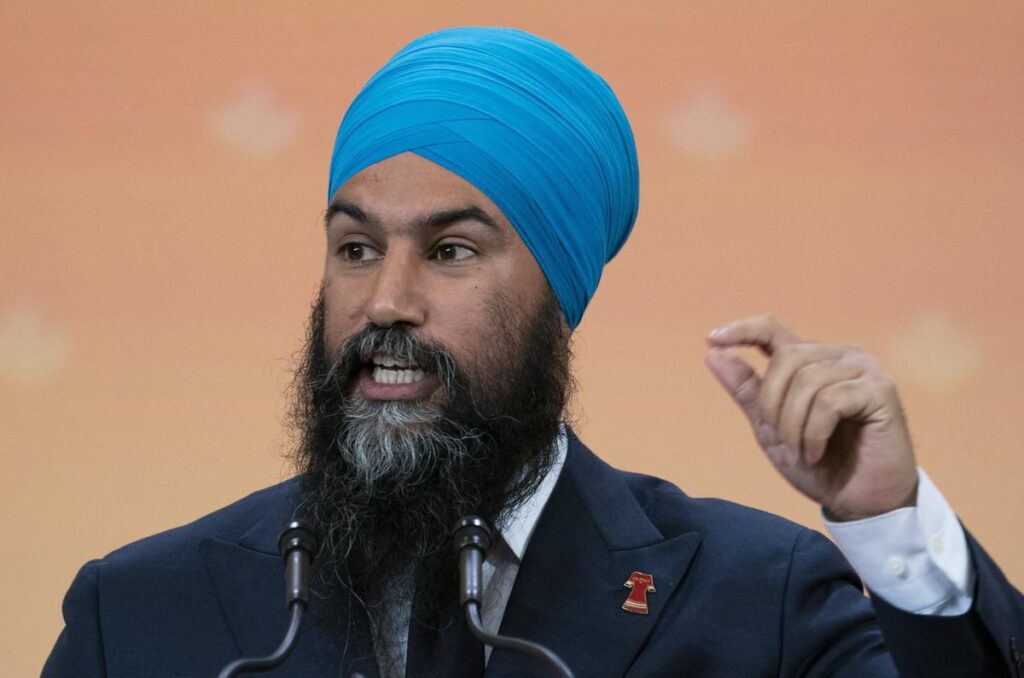June 2023 a man deemed the leader of the Khalistan movement was assassinated in Canada. Sikh Terror in Canada

This follows on the heels of a Brampton, Ontario Khalistan parade featuring a depiction of the assassination Indian Prime Minister Indira Gandhi. Was this a case the Indian government taking care of their internal business, all be it on Canadian soil?
There are those in the Sikh community that have put the blame on the Canadian government for not providing a security detail.
Others ask why this India Khalistani issue is a Canadian problem. People critical of multiculturalism point to the Singh decision as a nail in Canada’s coffin
Entrenching Refugee Rights in Canada: The 1985 Singh Decision
Up to the early 1980s, refugee claimants had the possibility of appealing a negative outcome to their refugee claims. However, Canada’s refugee determination system remained partial to the interests of the Canadian government rather than the claimant. The latter was not afforded the right to state their case before federal officials and to know the case criteria that they would need to meet under the principle of fundamental justice.
Challenging Canada’s Refugee Determination System before the Courts:
Between 1977 and 1980, seven foreign nationals including six Sikh Indian citizens and one Guyanese citizen claimed refugee status, under the 1976 Immigration Act, upon arriving in Canada.[2] The individuals based their claims on the 1951 United Nations Convention
Singh v. Minister of Employment and Immigration

The seven refugee claimants then appealed to the Supreme Court of Canada (SCC) where six (of nine) justices of the court agreed to hear the appeal… The Federation of Canadian Sikh Societies and the Canadian Council of Churches were also represented as intervenors in the case.[7] Before the SCC, Satnam Singh’s lawyer, C.D. Coveney, argued that the process in which a recently-arrived individual made their claim for refugee status violated their rights to life, liberty, and security of the person (Section 7 of the Charter)
Canadian government argued that since Singh and his co-appellants were not Canadian citizens or permanent residents they had no legal standing before the courts. They argued that the Charter did not apply to “aliens.”[8
Supreme Court Ruling in Singh v. Minister of Employment and Immigration
On 4 April 1985, the six members of the court (Chief Justice Brian Dickson and Justices Bertha Wilson, Jean Beetz, Willard Estey, William McIntyre, and Antonio Lamer) who gave leave to appeal before the Supreme Court of Canada (SCC) ruled in favour of the appellants. The six justices were evenly split (3-3) in their decisions.[14] A fellow judge of the court, Justice Roland Ritchie, sat in on the proceedings but did not take part in the judgement.[15] Justice Bertha Wilson, who wrote the majority opinion on behalf of Chief Justice Brian Dickson and Justice Antonio Lamer, found that the system for determining refugee status claims under the 1976 Immigration Act was “inconsistent with the requirements of fundamental justice”
Conclusion:
The Singh decision helped make Canada one of the most liberal refugee systems in the world, it also became one of the most expensive to operate.
The Singh decision remains controversial to this day. Supportive legal and immigration scholars note that before the 1982 Charter and the 1985 Singh decision, the lack of a constitutionally-enshrined bill of rights and the use of “privative clauses” in immigration statutes saw Canadian courts display extraordinary deference to executive and administrative officials when it came to the formulation of Canadian immigration policy. Courts were also less likely to police deficiencies in immigration processes and procedures.[29] Since the Singh decision, refugee advocates view the SCC’s majority ruling as a progressive response to the need to be considerate of legitimate refugees in need of protection. Critics believe the decision has led to an increase in fraudulent refugee claims, which clog the refugee determination system in Canada, and often lead to improper admissions to the detriment of legitimate refugees.[30] Nonetheless, the Singh decision remains one of the most important legal decisions in Canadian immigration history due to its impact on immigration, Charter, and administrative law.[31
